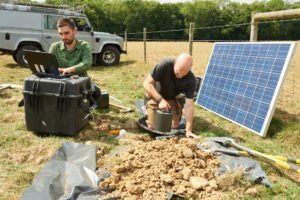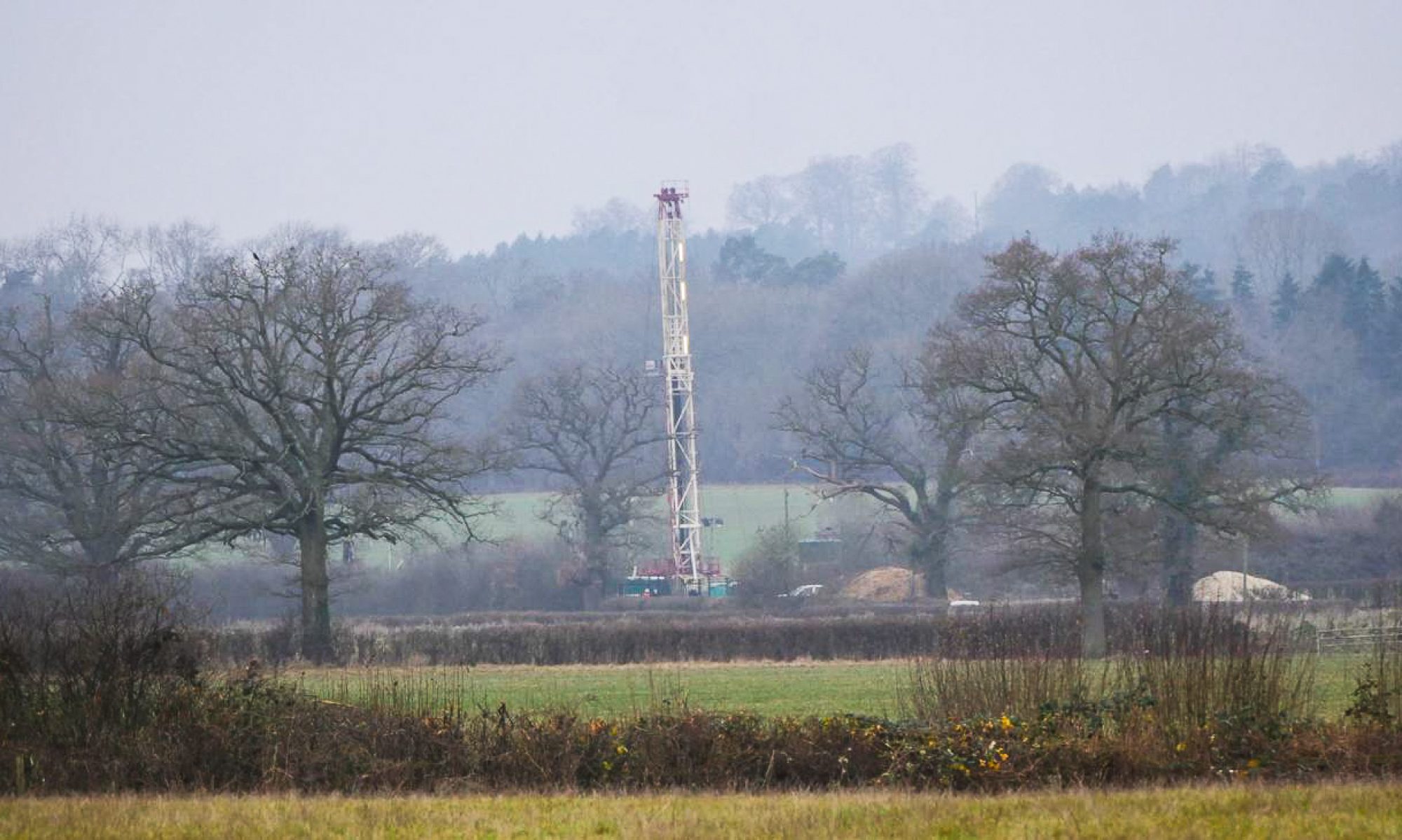On 1 April 2018, an earthquake struck near Newdigate in Surrey. It was followed by further quakes over the next two months, in a swarm that is unprecedented in the last half century. 57 earthquakes have been reported on the British Geological Survey website and additional small tremors have been analysed, bringing the total to around 170 at the time of writing. They continue to occur.

Seismologists plotted the epicentres between Newdigate and Charlwood, just 3km from the Horse Hill drill site and 8km from Brockham.
The earthquakes have caused injury and damage to property, as well as considerable anxiety to residents across a wide area. Some have been felt over 10km away. Residents report loud bangs and shaking, with many thinking a plane or lorry had crashed nearby. As the quakes are at shallow depth, the intensity of the shaking at the surface is higher than would be felt from deeper earthquakes of a similar magnitude. The strongest earthquake so far was given an intensity of 5 and 1,600 people reported feeling it to the British Geological Survey.
Cause of the quakes
In October 2018, the Oil & Gas Authority (OGA) hosted a workshop to look into the cause of the quakes, which was attended by academics and regulators and chaired by the British Geological Survey. The report of the workshop concluded that there was no causal link between the seismic events and oil and gas activity. However this did not represent a consensus and some geologists took the opposite view.
The workshop disregarded the existence of Horse Hill, as they maintained that no work was being carried out there at the time of the first quakes. This has later been proven to be false. It only considered drilling at Brockham, and decided that was not the cause.
Specialists in Structural and Petroleum Geology at the Edinburgh University School of GeoSciences, who have expertise in seismic surveying of the deep underground and pressure effects on stress transfer, as well as practical experience of boreholes, believe that activities at Horse Hill were causing the quakes. They examined the evidence and wrote a briefing, ‘Further Potential for Earthquakes from Oil Exploration in the Weald‘, published in February 2019, said: “Our assessment supports the concern that Horse Hill oil exploration triggered the earthquakes. We infer that future oil exploration and production close to critically stressed faults in the Weald is likely to result in similar earthquake events.”
Another expert who disagrees with the OGA is Grant Hocking, president and founder of US firm GeoSierra. His paper Newdigate Seismicity and Link to Horse Hill HH‐1 Well Activities postulates a probable direct link between the activities at the Horse Hill well, HH‐1 and the quakes.
Conflict of interest
This highlights the contradiction at the heart of oil and gas regulation. The primary aim of the OGA is to maximise oil and gas production across the country – which conflicts with its responsibility as a regulator.
Call for a moratorium
Even small earthquakes can cause considerable damage over time. Groningen in the Netherlands is one example of earthquakes caused by gas extraction. After years of small earthquakes, houses began to collapse and over a billion Euros has so far been paid out in compensation. Complaints from local residents were ignored for years and the operating company denied responsibility – just as is happening in Surrey.
The Weald Action Group has called for a moratorium on all oil and gas drilling in the Horse Hill area until there is a thorough understanding of the seismic risks and consensus on safety. The case for employing the precautionary principle is obvious.
In November 2019, the government announced a moratorium on fracking, because of tremors at Preston New Road in Lancashire, the UK’s only active fracking site. The largest tremor at Preston New Road measured 2.9 magnitude, and the UK Oil and Gas Authority warned that it was not possible to predict the probability or magnitude of further earthquakes that fracking might trigger. The Surrey swarm has seen earthquakes up to 3.1 magnitude. We have renewed our calls for the moratorium to be extended to other forms of oil and gas extraction, which aren’t defined as fracking, but which carry many of the same risks, including earthquake risk.
Read more
- Geologists link Surrey earthquakes to oil site as new tremor felt in the area (article on Drill or Drop, February 2019)
- Surrey earthquakes unlikely to be caused by oil activity, say researchers (article on Drill or Drop, June 2019)
- Further Potential for Earthquakes from Oil Exploration in the Weald (paper by Dr Andrew Cavanagh, Dr Stuart Gilfillan and Professor Stuart Haszeldine, School of GeoSciences, The University of Edinburgh, February 2019)
- Newdigate Seismicity and Link to Horse Hill HH‐1 Well Activities (paper by Grant Hocking, GeoSierra, September 2019)
- Why doesn’t the fracking moratorium cover acidising too? (news story on Weald Action Group website, November 2019)
What you can do
If you are concerned about the earthquakes, there is a lot you can do:
- Contact your MP and ask them to call for a moratorium on moratorium on all drilling, re-injection, acidising, flow testing and related activities in the Weald until an investigation has taken place.
– In Reigate constituency (where the Horse Hill drill site is located), your MP is Crispin Blunt, email crispinbluntmp@parliament.uk or write to him at the House of Commons, London, SW1A 0AA.
– In Mole Valley (where Brockham is located), your MP is Sir Paul Beresford, email office@molevalleyconservatives.org.uk or write to Mole Valley Conservative Association, 212 Barnett Wood Lane, Ashtead, KT21 2DB. - Contact your Surrey county councillor and ask them to call for a moratorium on all drilling, re-injection, acidising, flow testing and related activities in the Weald until an investigation has taken place.
- Find out more about the campaigns opposing the oil drilling plans in the Weald: At Horse Hill there is Back off Horse Hill – contact backoffhh@gmail.com – and at Brockham there is Brockham Oil Watch.
